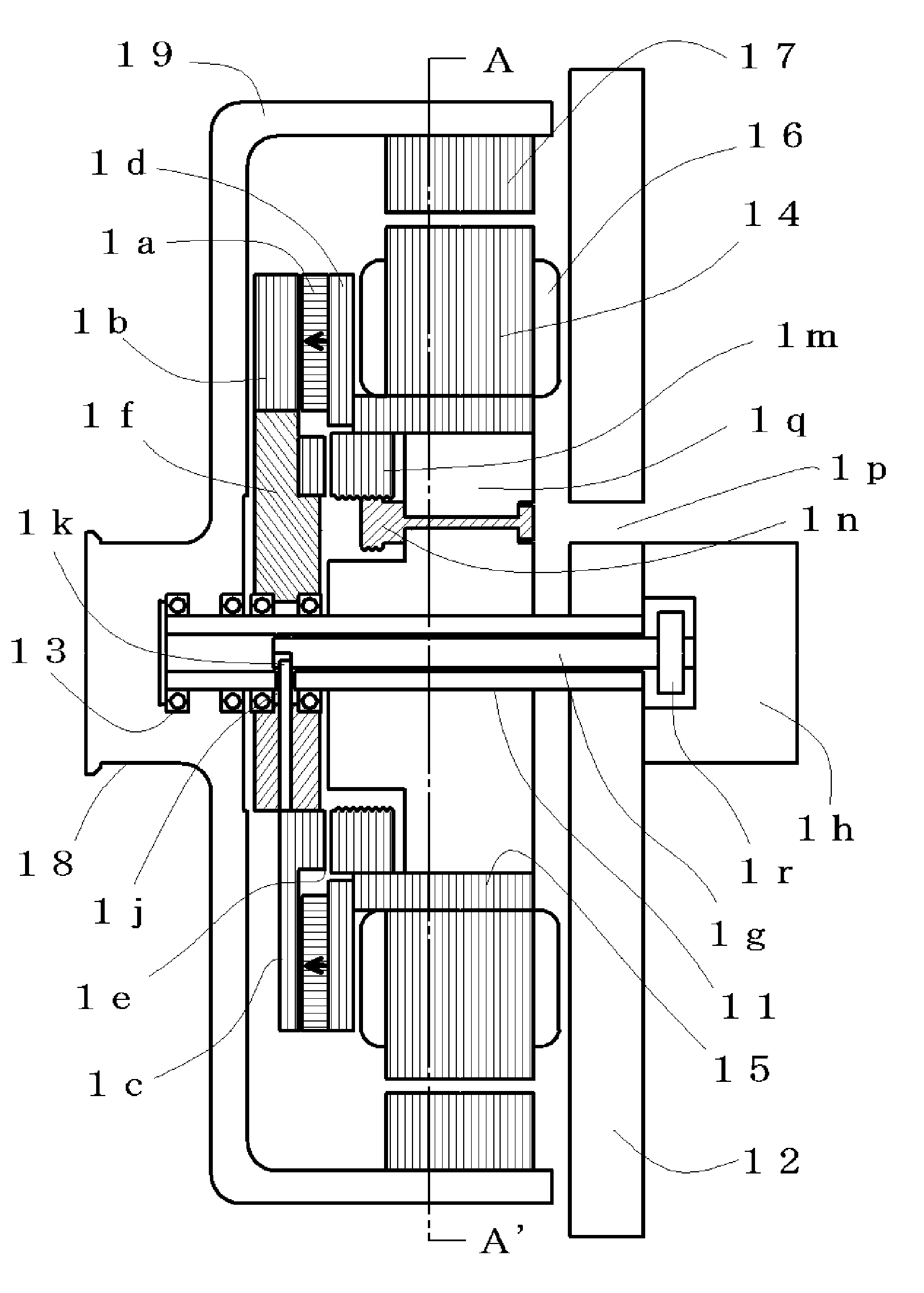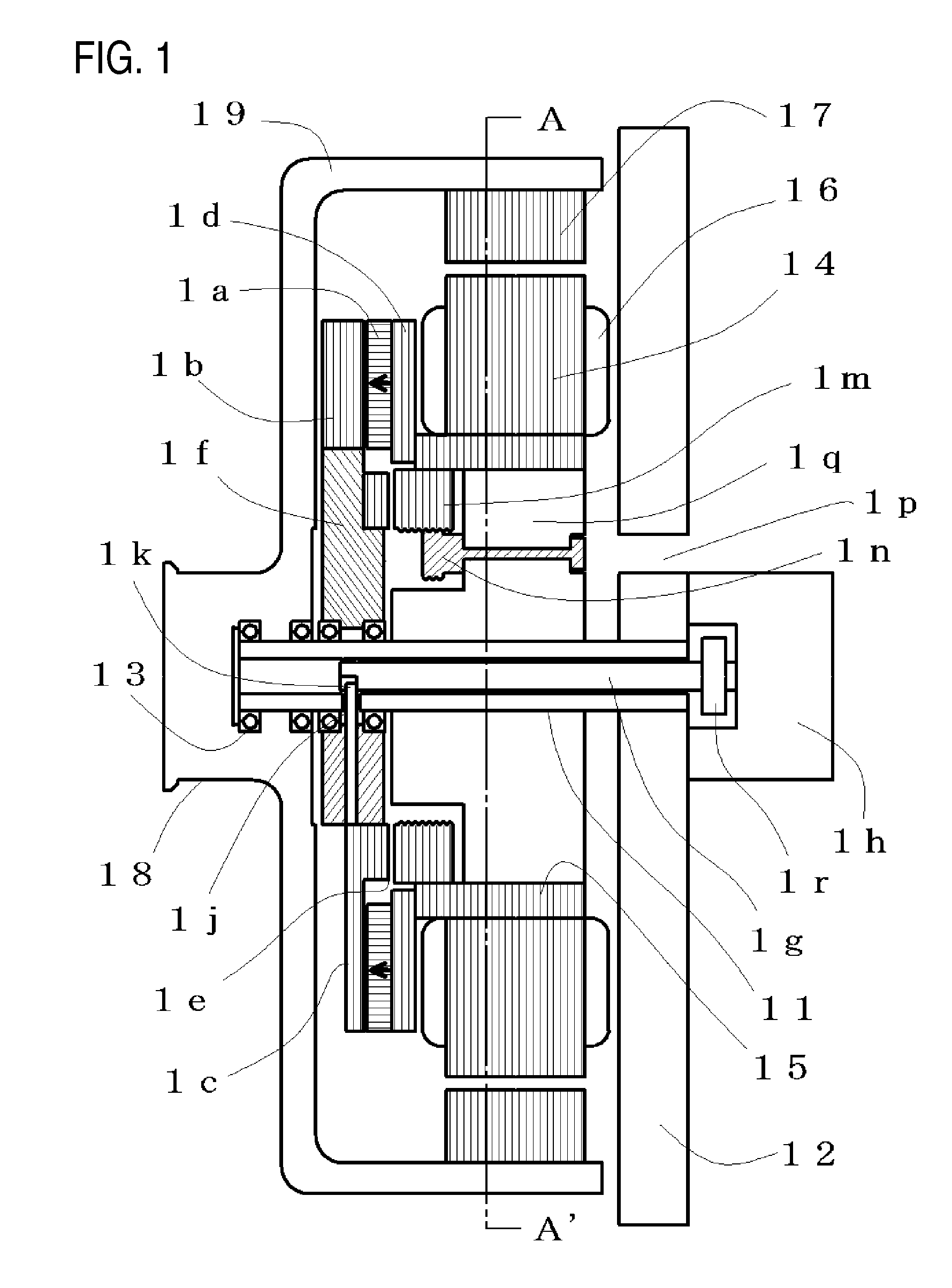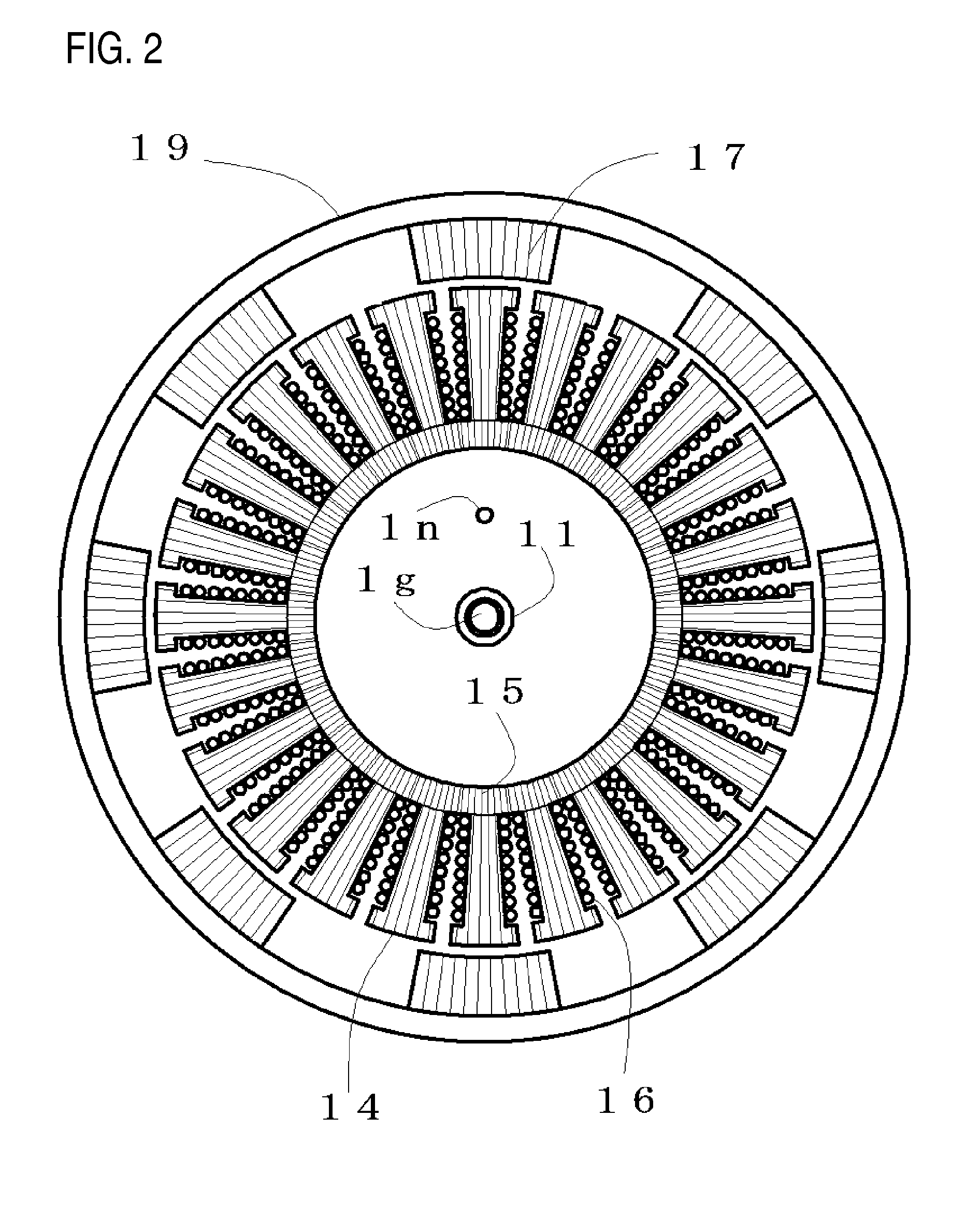Field controllable rotating electric machine system with magnetic excitation part
a technology of magnetic excitation and electric machine, which is applied in the direction of electric generator control, dynamo-electric converter control, mechanical energy handling, etc., can solve the problems of large energy loss, difficult control of the system, and inability to obtain optimal power in a wide rotational speed range. achieve the effect of field weakening control
- Summary
- Abstract
- Description
- Claims
- Application Information
AI Technical Summary
Benefits of technology
Problems solved by technology
Method used
Image
Examples
first embodiment
[0063]FIG. 2 shows a sectional view of the armature and the rotor along A-A′ of FIG. 1, and some of the component parts are appended with numbers for explaining the reciprocal relation. The armature is composed of the cylindrical magnetic yoke 15 fixed to the fixed shaft 11, a plurality of the magnetic teeth 14 having non-magnetic portions in the circumferential direction, and the armature coils 16 wound around the magnetic teeth 14. In the first embodiment, twenty four armature coils 16 are included and connected so as to have three phases. The magnetic teeth 14 and the cylindrical magnetic yokes 15 are composed by punching out a silicon steel plate by a predetermined die and then stacking the punched plates, and the armature coils 16 are wound.
[0064]In FIG. 2, in the rotor, eight magnetic salient poles 17 each in which silicon steel plates are stacked are disposed at even intervals in the circumferential direction. Spaces between the magnetic salient poles 17 are non-magnetic port...
second embodiment
[0112]FIG. 9 shows a sectional view of the armature and the rotor along the B-B′ in FIG. 8, and some component parts are appended with numbers for explaining the mutual relations. The armature includes the cylindrical magnetic yoke 85 fixed to the housing 82, a plurality of magnetic teeth 84 extending radially from the cylindrical magnetic yoke 85 and having non-magnetic portions in the circumferential direction, and the armature coils 86 wound around the magnetic teeth 84. The second embodiment includes nine armature coils 86, and three phases thereof are connected. In the edges of the magnetic teeth 84 of the armature, saturable magnetic junctions 93 that are short in the radial direction are provided between the contiguous edges of the magnetic teeth 84. The magnetic teeth 84 and the saturable magnetic junctions 93 are punched out of a silicon steel plate by a predetermined die and stacked and wound with the armature coils 86, and then, combined with the cylindrical magnetic yoke...
third embodiment
[0142]In FIG. 13, the rotor has a structure having the magnetic salient poles and the non-magnetic portions one after the other in the circumferential direction, and the adjacent magnetic salient poles are shown by numbers 131, 132, and the non-magnetic portions are shown by number 133. Number 134 shows a magnetic-flux channel portion. In this third embodiment, cross sectional area of the magnetic salient poles 131, 132 is not so large, then the magnetic-flux channel portion 134 that has wide cross sectional area exploiting the inside empty space is disposed. Therefore the enough amount of magnetic flux can flow in the magnetic-flux channel portion 134.
[0143]The magnetic salient poles 131, 132 that are conjugated by small width saturable magnetic junctions 135 are composed by punching out a silicon steel plate by a predetermined die and stacking the punched-out plates. The non-magnetic portion 133 between the magnetic salient poles 131, 132 is composed in non-magnetic resin or the l...
PUM
 Login to View More
Login to View More Abstract
Description
Claims
Application Information
 Login to View More
Login to View More - R&D
- Intellectual Property
- Life Sciences
- Materials
- Tech Scout
- Unparalleled Data Quality
- Higher Quality Content
- 60% Fewer Hallucinations
Browse by: Latest US Patents, China's latest patents, Technical Efficacy Thesaurus, Application Domain, Technology Topic, Popular Technical Reports.
© 2025 PatSnap. All rights reserved.Legal|Privacy policy|Modern Slavery Act Transparency Statement|Sitemap|About US| Contact US: help@patsnap.com



